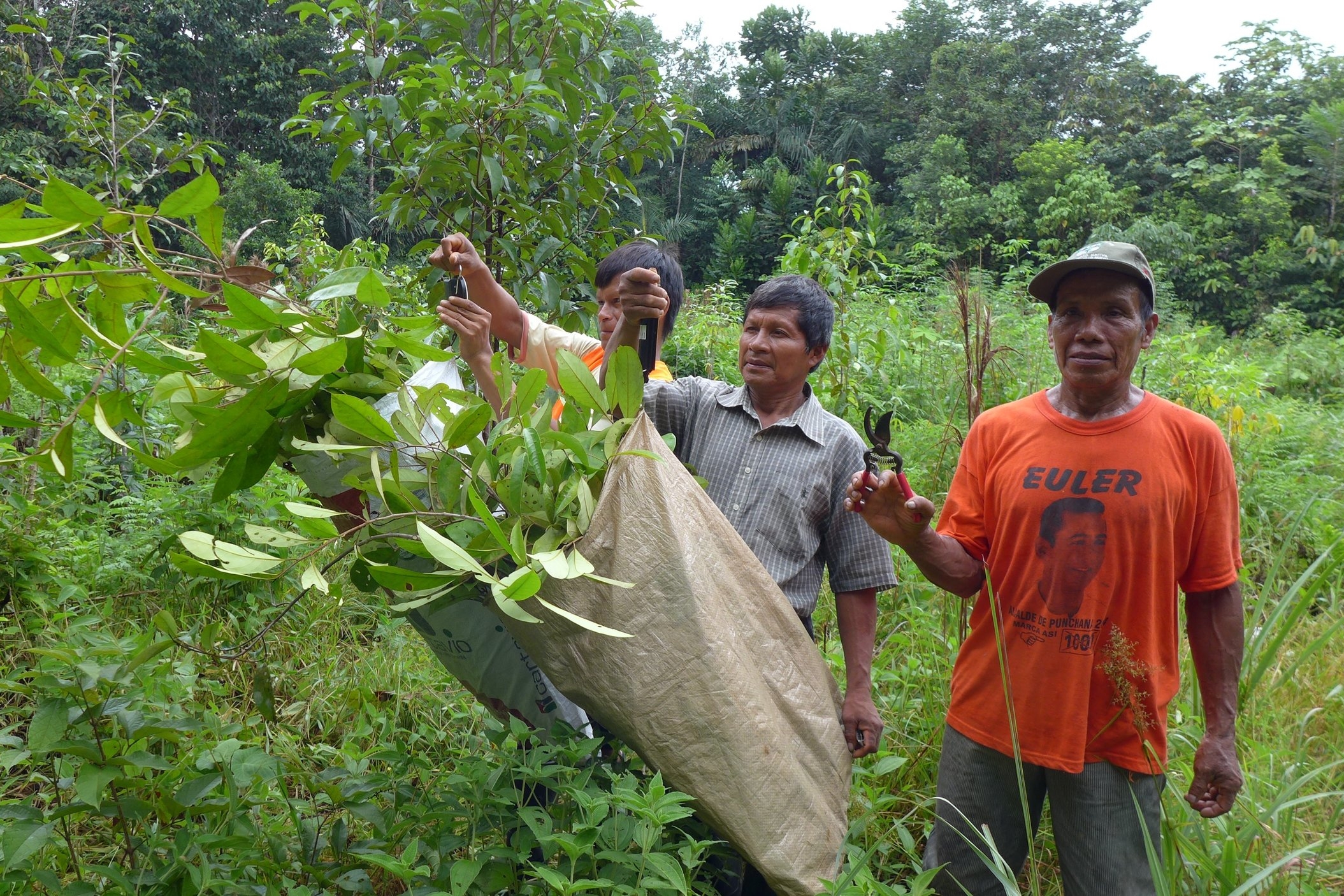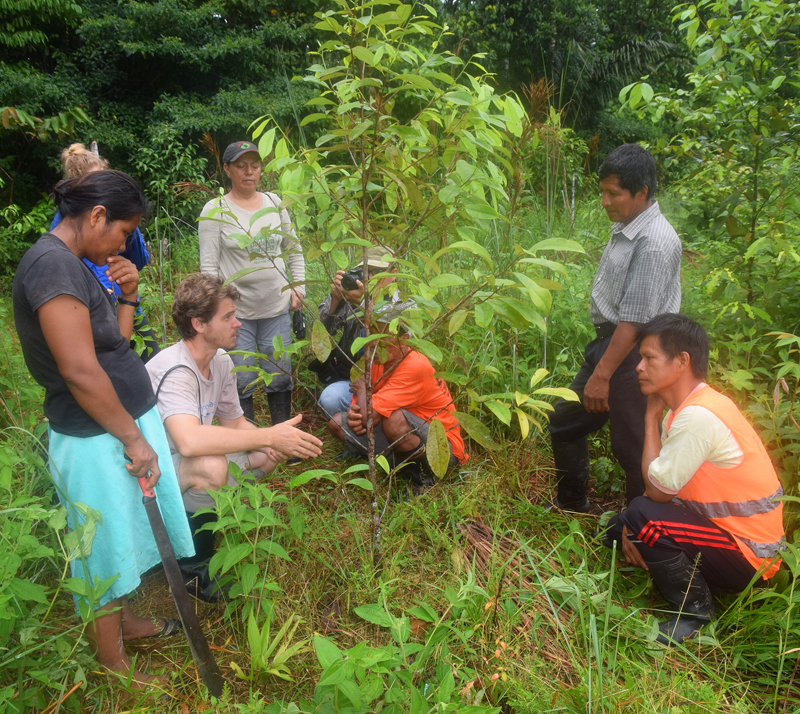Rosewood Revisited
One of the rosewood farmers of Brillo Nuevo with one of his 16 month old rosewood trees. Photo thanks to Andrew Schwarz
For the June solstice of 2014, the Southern Hemisphere's winter solstice, I had the pleasure of finding myself in Iquitos, Peru, the largest city in the Peruvian Amazon and the largest city in the world not connected by road. In place of a road – the Amazon River, the earth's greatest river system and one of the Seven Natural Wonders of the World according to a 2012 global vote. You may remember from previous posts that what brought Camino Verde to this part of the world – not too terribly far from our Tambopata home base – was a tree whose history is both fascinating and tragic.
I'm speaking of Brazilian rosewood (Aniba rosaeodora), a beautiful, enormous Amazonian hardwood whose rich, floral scent fueled an unlikely persecution: rosewood trees were sought out and exploited to the point of near extinction to supply the demand of famous European perfumers throughout the 20th century. Think teams of haphazard lumberjacks ripping rainforest giants from the soil roots and all to distill an essential oil whose dollar value in the perfumers' trade blinded natives and industrialists alike to the inherent worth of a species, its inherent right to exist.
Fast forward to the 21st century. Once plentiful rosewood trees became extinct over entire regions of Amazonia. Despite ongoing demand for its aromatic oil, efforts at reforestation of the species were lackluster and few.
You may recall that in the first months of 2013 Camino Verde was able to acquire and give a home to over a thousand rosewood trees, the fulfillment of a five year search for seeds that finally, so to speak, bore fruit. Over half of those rare seedlings were planted in partnership with Brillo Nuevo, a native community of the Bora tribe found on the remote waters of the Yaguasyacu River, an area formerly thick with rosewood trees.
Last week I had the honor of revisiting those rare infant seedlings, now a year and a half on, and to share stories with the farmer-stewards elected by their community to be the caretakers of those trees. To my delight, in the sixteen intervening months many of these precocious green youngsters had surpassed the height of their human keepers – a testament to the dedication of our partners and to the resilience of the rainforest itself.
The growth of the trees is worth celebrating in and of itself, but our plans for their future are equally exciting. With our allies at the Center for Amazon Community Ecology, longtime friends of the Bora of Brillo Nuevo, we are forging a sustainable future for a once-abused species that will also provide meaningful income for a proud, marginalized people. By the end of 2015 we plan to be harvesting the first branches and leaves in a new paradigm for rosewood essential oil production – one that promotes and enhances the species' survival rather than threatening it with oblivion.
Just days after returning from the pink dolphin-rich waters of the Yaguasyacu, we visited another community remarkable for its role in the rosewood story. Just an hour by fast boat from Iquitos up the Amazon River, the town of Tamshiyacu is home to a small group of visionary farmers who with support from the Peruvian government planted hundreds of rosewood trees in the last decade. One farmer, Jorge told me how the community had learned to value and protect this highly valued tree, and after a fruitful day of visiting with farmers and applauding this village's remarkable efforts, we sat down to forge an unprecedented plan for the survival of rosewood.
The Amazon River, Loreto, Peru
Jorge and his neighbors agreed to collect seeds from their carefully stewarded adult trees, seeds that we and our partners at the Peruvian Amazon Research Institute (IIAP) will propagate to seedlings and distribute to native communities and Camino Verde's reforestation center for prosperous growth as seed trees in perpetuity. In exchange for their efforts, in the months to come we will use our distillation equipment with Jorge and other rosewood stewards, allowing them to earn a decent income from sustainable harvest of rosewood leaves and branches that rather than harm, will in fact encourage the trees' growth.
Thanks are in order to the Center for Amazon Community Ecology, whose ongoing relationship with the people of Brillo Nuevo and other native communities made a successful reforestation of rosewood possible there.
And thanks also to you – without donor support the survival of rosewood and the many other species we plant and protect would be little more than a dream. By the way, at last count the number of rare and endangered Amazonian tree species we have planted and now care for passed 300! Back at our Tambopata reforestation center we've planted another half dozen species closely related to rosewood, trees that in 2-3 years will provide entirely new, never-before-distilled essential oils. Now more than ever, your contribution means a viable future for so many of the organisms that provide the air we breathe and make the Earth livable.




